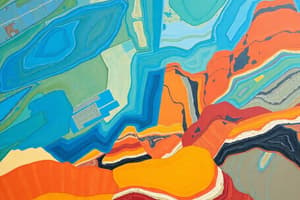Podcast
Questions and Answers
Dari mana asal nama 'Sabah'?
Dari mana asal nama 'Sabah'?
- Nama itu diambil dari seorang pedagang terkenal di Sabah
- Nama itu berasal dari seorang raja tempatan yang memerintah di Sabah dahulu kala
- Nama itu diberikan oleh pemerintah British yang menguasai Sabah pada masa lalu
- Nama itu berasal dari sejenis pisang yang ditanam di pantai barat Sabah (correct)
Siapakah yang merujuk Kota Kinabalu sebagai 'Api-Api' dalam peta Portugis pada 1604?
Siapakah yang merujuk Kota Kinabalu sebagai 'Api-Api' dalam peta Portugis pada 1604?
- Seorang penjajah Portugis (correct)
- Seorang penjajah British
- Seorang pedagang tempatan
- Seorang ahli geografi terkenal
Siapakah yang merujuk Sabah sebagai 'BURNI' semasa lawatannya ke Borneo?
Siapakah yang merujuk Sabah sebagai 'BURNI' semasa lawatannya ke Borneo?
- Seorang pedagang Arab
- Seorang penjelajah Itali (correct)
- Seorang penjelajah Sepanyol
- Seorang penjelajah China
Flashcards are hidden until you start studying
Study Notes
- The origin of the name 'Sabah' is believed to come from a type of banana called 'pisang Saba' or 'jaba' by the locals.
- This banana is a popular food source and is grown along the west coast of Sabah.
- The name 'Sabah' was first used by traders in the 15th century who traveled between North Borneo and the Sulu Islands in the southern Philippines.
- The name 'Sabah' was used before the arrival of the North Borneo Chartered Company and the British.
- In a 1604 Portuguese map of Melaka, Kota Kinabalu was referred to as 'Api-Api'.
- After the North Borneo Chartered Company took over Sabah, the name was changed to 'North Borneo' in 1881.
- The name 'Sabah' was reinstated in 1963 during the formation of Malaysia.
- The Javanese poem Nagarakertagama from 1365 refers to Sabah as 'Seludang'.
- Marco Polo referred to Sabah as 'BURNI' during his visit to Borneo.
- The name 'Sabah' has a long history and has been used by various groups over time.
Studying That Suits You
Use AI to generate personalized quizzes and flashcards to suit your learning preferences.




